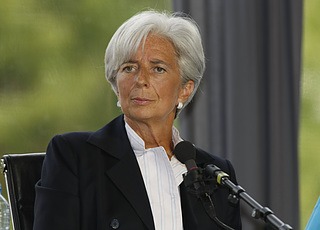ECB (European Central Bank)
ECB’s Sleijpen: Inflation risks are large
European Central Bank (ECB) policymaker Olaf Sleijpen spoke at a news conference in Amsterdam, Netherlands, on Friday.
ECB’s Kazaks: Counter-productive to talk about direction of rates
European Central Bank (ECB) policymaker and the current governor of the Central Bank of Latvia, Mārtiņš Kazāks, said during the European trading session that the consumer inflation expectations remain well-anchored.
ECB latest analysis
ECB LATEST NEWS
Related content
Editors' picks

AUD/USD keeps range near 0.6700 despite strong Chinese PMIs
AUD/USD is keeping its range near the 0.6700 handle for the third day in a row on Wednesday. The Australian Dollar remains unimpressed by the unexpected expansion in the Chinese business PMIs for December. The year-end trading lull dominates, leaving the pair gyrating in a tight band.

USD/JPY flatlines below 156.50 amid the year-end grind
USD/JPY remains caught in near-term congestion below 156.50 on the final trading day of 2025. The pair traders are battling headwinds on multiple fronts, with the Fed- BoJ monetary policy divergence to play out in 2026 amid looming Japanese forex intervention risks.

Gold attempts another run toward $4,400 on final day of 2025
Gold price makes another attempt toward $4,400 in Asian trading on Tuesday, keeping the recovery mode intact following Monday's over 4% correction. The bright metal seems to cheer upbeat Chinese NBS and RatingDog Manufacturing and Services PMI data for December.

When the tape goes quiet the positioning speaks
From the outside this session looked like paint drying. Indexes barely moved. No reaction to Case Shiller. No reaction to the Fed minutes. The S&P 500 parked itself right where it started, and the much-discussed Santa rally stalled into a polite cough.

Bitcoin Price Annual Forecast: BTC holds long-term bullish structure heading into 2026
Bitcoin (BTC) is wrapping up 2025 as one of its most eventful years, defined by unprecedented institutional participation, major regulatory developments, and extreme price volatility.
Majors
Cryptocurrencies
Signatures
Big Picture
what is the ECB?
The European Central Bank (ECB) is the central bank empowered to manage monetary policy for the Eurozone. With its beginnings in Germany in 1998, the ECB's mandate is to maintain price stability in the Eurozone, so that the Euro's (EUR) purchasing power is not eroded by inflation. As an entity independent of individual European Union countries and institutions, the ECB targets a year-on-year increase in consumer prices of 2% over the medium term. Another of its tasks is controlling the money supply. This involves, for instance, setting interest rates throughout the Eurozone. The European Central Bank's work is organized via the following decision-making bodies: the Executive Board, the Governing Council and the General Council. Christine Lagarde has been the President of the ECB since November 1, 2019. Her speeches, statements and comments are an important source of volatility, especially for the Euro and the currencies traded against the European currency.
who is ECB's President?
Christine Lagarde was born in 1956 in Paris, France. Lagarde, who graduated from Paris West University Nanterre La Défense, became President of the European Central Bank (ECB) on November 1, 2019. Prior to that, she served as Chairman and Managing Director of the International Monetary Fund (IMF) between 2011 and 2019. Lagarde previously held various senior ministerial posts in the Government of France: she was Minister of the Economy, Finance and Industry (2007-2011), Minister of Agriculture and Fishing (2007) and Minister of Commerce (2005-2007).
How to trade the ECB interest-rate decision
The ECB Governing Council makes monetary policy decisions at meetings held eight times a year. Decisions are made by heads of the Eurozone national banks and six permanent members, including the President of the ECB, Christine Lagarde.
Prior to the rate decision:
- Many traders buy the rumors and square their positions shortly after the decision is made. For instance, if the market believes that the European Central Bank (ECB) will hike interest rates, traders buy the Euro (EUR) and close the position shortly after the announcement. On the other hand, if the expectation is a rate cut, traders will short the Euro and square the position after the announcement.
After the rate decision:
- If the market's expectations differ from the actual rate decision, there can be some excellent trading opportunities.
- If the market expects a rate hike but the European Central Bank ends up cutting rates, a short-term (1-2 hours) selling the Euro could be successful.
- If the market expects a rate cut but the ECB raises rates, a short-term long position on the Euro (1-2 hours) may be advantageous.
More generally, relatively high interest rates will usually result in a stronger Euro and vice versa.
Hike, cut or keep interest rates unchanged
The European Central Bank's (ECB) decision on interest rates always has an effect on the Euro (EUR).
When interest rates increase, the European Central Bank is selling government securities to large financial firms. In turn, the financial organizations are paying in euros for these securities. This effectively decreases the amount of currency circulating in the economy. A decreasing supply leads to higher demand and therefore causes the value of the Euro to appreciate.
When the interest rates decrease, the European Central Bank floods the market with euros. This is done by purchasing government securities from financial organizations. In return for the securities, these banks and financial deals are paid in euros, therefore increasing the supply of euros in the economy. As supply increases, the value of the Euro depreciates.
the world interest rates table
The World Interest Rates Table reflects the current interest rates of the main countries around the world, set by their respective Central Banks. Rates typically reflect the health of individual economies, as in a perfect scenario, Central Banks tend to rise rates when the economy is growing and therefore instigate inflation.
some concepts you need to know
In practical terms, QE means that central banks create money out of nothing to buy securities, such as government bonds. This new money swells the size of bank reserves by the quantity of assets purchased and that's why this programme is called Quantitative Easings. The money supply is intended to flood financial institutions with capital in an effort to stimulate lending and increase liquidity.
Much of the governments' debt is held by banks in the Eurozone and the ECB wants them to give more credits. If the European Central Bank buys government bonds, their prices rise and profitability drop even more. This is a liquidity-providing operation that weakens the value of the euro. This depreciation makes European exports cheaper and competitive, and ultimately, helps in recovering. In addition, as a result of the stimulus to internal and external consumption, the ECB combats the risk of deflation, a widespread and prolonged drop in prices, as well as the high unemployment.

 Lagarde on
Lagarde on